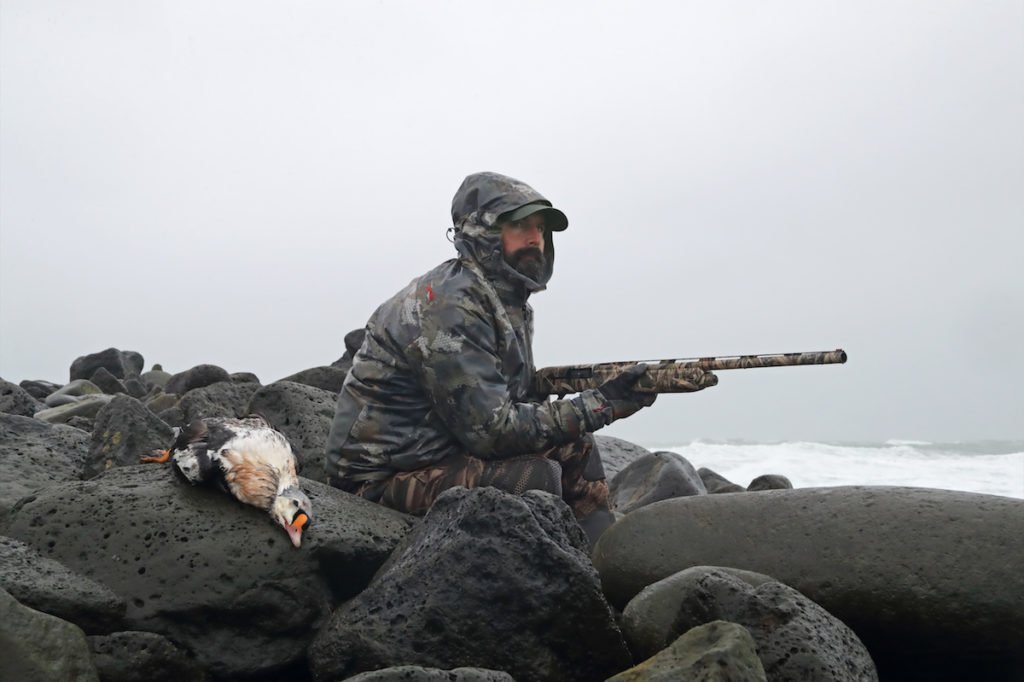King Eider

King Eider (Sometaria spectabilis) are large sea ducks that some revere as the most attractive in the waterfowl world. Adorned below the light blueish-gray crown is a brightly colored orange and yellow frontal lobe making the breeding male’s head look oblong; white eye-ring and line running down towards nape. The drake’s short bill is a reddish orange, conspicuously standing out from the mostly white body. Underneath the eye, there is a watercolor-like green patch that separates from the gray/blue back of the head; black v-shaped chin strap below the lower mandible. The underbelly, lower back, and tail are a striking jet black. Inner scapulars raised into prominently pointed sails; tertials elongated and curved. The king eider drake’s wings are mostly black with an oval patch of white on the coverts. A white circle in the otherwise black rump tell-tale sign in low lighting. Females do not have the distinctive face that males do, but they have a grayish bill that sharply slopes off the face. The neck is mottled light brown and/or gray while the rest of the body is a warm, almost rufous colored brown. Hen wings are mostly mottled brown like the rest of the plumage, with a few covert feathers being white lined.
Available Hunts

King Eiders are more migratory than common eiders, breeding even further north and replacing it over most of arctic Canada and Siberia. They do not stay anywhere year-round. Breeding areas found throughout northern Greenland, Nunavut, Northwest Territories, Yukon, and Alaska. Most breeding king eiders are found in the islands surrounding Nunavut and the Northwest Territories. Both sexes will take part in searching for proper nesting grounds, which are usually depressed areas on the ground. Drakes are very protective over the territory and their mate until the eggs are laid, at which time they depart to molt. While King Eider will nest near saltwater and freshwater, they will move to saltwater areas once their young have fledged out. Migrating King Eiders overwinter among the coasts of New England, the southern parts of Greenland, and the Aleutian Islands. Nowhere are they hunted with greater success than in the Aleutian Islands.
The King Eider diet is mostly crustaceans, but they also consume insects and plants while foraging on land. The zebra mussel, which is an invasive species found in the Great Lakes, are often consumed by these ducks. This species are as strong fliers as they are swimmers and categorized as surface divers and have been documented to dive up to 180 feet (which may be the deepest of any duck).







